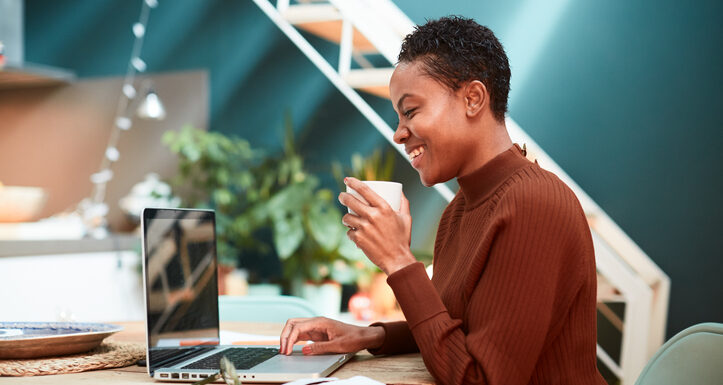I’m seeing lots of organisations asking their staff to come back for a particular number of days a week — sometimes full time, sometimes 2 or 3 days. At UAL, we don’t feel we know enough to give teams that kind of guidance, so we’re asking them to experiment and learn. This is a social change, not just a switch in locations — so it needs prototyping and testing.
Starting a new job from home is a bit strange. But I’ve noticed things that might have passed me by if I’d moved straight into the proverbial corner office.
For example, it’s well known that the pandemic created a decade of digital disruption in a single year. Many organisations, UAL included, will change our delivery model rapidly as a result.
Less attention is paid to social disruption, the challenge to prior ways of thinking and doing. Organisations will not change rapidly enough unless we allow our staff to work out the consequences without micro-managing from the centre.
Location, location, dislocation
There are widely acknowledged benefits to working in the same space. Working together is a cure for social isolation. Innovation correlates with population density. Our networks and job prospects rely on casual acquaintance. Life and business are better when people can come together easily.
In my first weeks at UAL, meeting people on video has had advantages. It’s easier to drop into lectures and classes, and getting around our bases all across London is quicker virtually. If starting a job is about getting from 0–60mph, then I’ve probably got to 40mph faster than I would have done physically. But getting to 60mph is impossible in 2D — you need to meet people in real life to really build relationships and understand the culture(s).
Even over Teams, my new colleagues have told me how much they like working at UAL. They’re not talking about buildings or work schedules. They’re describing the way people interact with ideas and objects — the vital attributes of any creative business.
Workspaces enable human endeavour and meet a human need. But I’ve been struck by how much of our current conversation aims to re-instate what we lost.
The modern office isn’t a timeless productivity hack. It evolved in response to (literal) paperwork.
So we should feel free to think about what kind of work we want, how and where we want to do it, without starting from previous assumptions or being deterred by the sunk costs of our existing buildings.
Working culture has changed
For all its hardship and sorrow, the last year changed working culture, often for the better. There was no instruction manual to do this — we worked things out together.
We won’t lose the best of our old ways of working. Social capital is built face-to-face and spent online. But we won’t go back to how we were before. I don’t envisage people enduring a long commute just to check their emails. Or a culture of judging people by whether they are in the office, rather than whether they are working effectively. Like many people, I want to do well at work and pick up my daughter from school.
There’s a mini-industry out there, thinking out this new way of working. The Eat Sleep Work Repeat podcast does a brilliant job of covering new thinkers in this field. It captures the changes we have been pioneering as a working society.
This is what people mean when they talk about the freedoms of the last year, even if at times it has been stressful. We trusted each other to deliver remotely during the pandemic, and we repaid that trust. If we change how we work before we think about where we work, we will give ourselves time and space to do our best work.
Conduct your own experiments
We need a different, deliberative approach to what comes next, unbundling what the office contributes to our work.
For us, this will be a decentralised, organic and above all social process, led by staff experiments and student feedback.
There are plenty of different labels for what comes next. I’ve called this hybrid working up to now. There’s much to like in the term dynamic working. Some major players call it smarter working. But even these terms don’t cover the ground properly. The disrupted office is a bundle of new ideas not an attempt to keep the old workplace going. Think of Living Hours or — another lesson from the pandemic — the ease of cutting international travel.
So there are wider and deeper issues than how many days we will be in the office. At UAL, we’re going to spend time talking and thinking about work overall — how can we trust our teams, give them the freedom and responsibility to focus on results, within a framework we all set together.
But our teams do also really care about how they will be going back to the office. So we’re starting with that question. We are encouraging each of our teams to experiment with different types of work pattern to suit different roles so that together we can answer some of the questions about what work will be like in the future.
How many days work best on site? Is it better when all of us are in the office on the same day, or spread through the week? Did we get to see other teams? Do we need to set up our offices in new ways? How do we hard-wire in fairness — we can’t fall into a way of working that just suits older, more senior staff.
Our staff and students will help us determine how different working patterns affect our creativity, our productivity and the estate we need. Only then will we redesign our space and policies in a framework that suits us professionally and individually, in time for a wider return to site in the autumn and a plan for the coming years.




